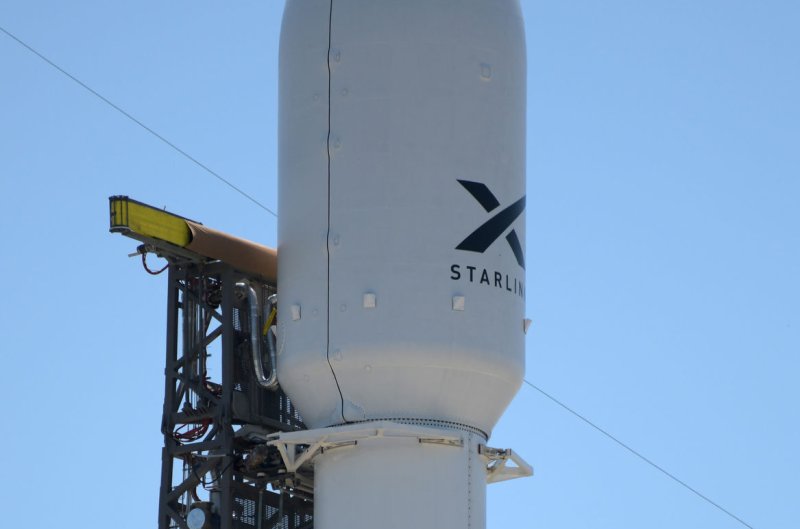A SpaceX Falcon 9 rocket stands poised to launch the company's Starlink satellites in May, similar to a launch planned for Tuesday morning. File Photo by Joe Marino-Bill Cantrell/UPI |
License Photo
ORLANDO, Fla., Jan. 24 (UPI) -- SpaceX postponed a launch Monday morning in Florida of 60 Starlink satellites due to strong high-altitude winds, and the company will try again Tuesday.
The Falcon 9 rocket is still prepared for liftoff with another attempt planned at 9:28 a.m. Tuesday. The launch site is Complex 40 at Cape Canaveral Air Force Station, about 8 miles northeast of the Kennedy Space Center Visitor Complex.
Weather was only 50 percent favorable for the launch Monday while the backup time on Tuesday morning has a better outlook at 80 percent favorable, according to Air Force forecasts.
SpaceX has 182 of its large dinner table-size Starlink satellites in orbit, each weighing over 500 pounds. When they reach space, they extend a large solar panel for power.
SpaceX intends ultimately to launch tens of thousands of satellites to beam broadband around the globe.
SpaceX previously launched 60 Starlink satellites at a time in May, November and on Jan. 6, with two test satellites launched before that.
The company has faced concerns from astronomers and other stargazers who have seen satellites shining brightly in the night sky. Astronomy groups have posted images showing how the satellites interrupted photos or space object observations.
The launch earlier in January carried one spacecraft, a so-called "Dark Sat," that had an experimental coating to make it less reflective and less visible to stargazers.
The results of that experiment haven't been announced. SpaceX's Starlink mission descriptions say satellites take four months to reach their proper orbit, so judging the effectiveness of the experiment will take a while.
In the meantime, SpaceX continues launching Starlink.
Starlink satellites orbit at a height of about 340 miles above the Earth. By comparison, the Kármán line that defines space is 62 miles up, and the International Space Station is more than 250 miles up.
Each Starlink satellite has small thrusters that use electronic propulsion fueled by krypton gas. The motors are intended to help redirect the spacecraft if it is headed for a collision with another space object.
The thrusters also help the satellites re-enter Earth's atmosphere and burn up at the end of their useful life or when they become obsolete. If the thrusters fail, the low orbit of the satellites would mean burning up within five years, anyway, the company said.















